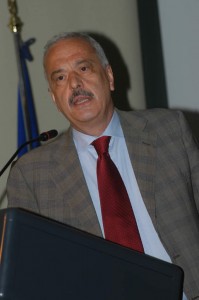 Doctor-patient communication is one of the themes which the Clinical Psychology Centre of San Paolo Hospital (Milan, Italy) has focused on. Supervisor of the Centre has been, for several years, Egidio Moja, Professor in Clinical Psychology and author, together with Elena Vegni, of the manual “Patient-centred medical visit”.
Doctor-patient communication is one of the themes which the Clinical Psychology Centre of San Paolo Hospital (Milan, Italy) has focused on. Supervisor of the Centre has been, for several years, Egidio Moja, Professor in Clinical Psychology and author, together with Elena Vegni, of the manual “Patient-centred medical visit”.
Q. For which reasons the topic of the doctor-patient communication is getting more attention now?
E.M. The main reason – I think – is in the increasing number of works demonstrating that some communication styles influence clinical consultations’ results in a positive way.
Q. Which features do these styles have?
E.M. The clinical method in which physicians usually are formed has been defined as disease-centred: as consequence, communication focuses only on disease, seen as a deviation from a norm of biological variables, and excludes as non influential the meaning it has for the patient. In the last decades has resulted as more and more clear the benefit to reach, next to the comprehension of pathologies, an adequate comprehension of interpretations, feelings, and expectations that symptoms generate into patients. Generally, this cultural proposal is named as patient-centred medicine, and it has precise consequences on the communication style of clinical consultations.
Q. Could you give us some examples?
E.M. Let’s think about a patient going to his/her doctor and saying “Doctor, I feel a sort of pain on my chest, and I’m worried about it. You know, on internet…”. Naturally, it is necessary that the doctor, starting from symptoms, arrives to a diagnosis and a therapy, but beyond these passages is often extraordinarily useful to explore the other parts of patient’s message. A question like “You told me you are worried because of something you found on internet. What did you read?”, can allow the patient to reveal ideas and feelings built around the symptom, and the doctor to explain, educate, and reassure.
Q. Which advantages has a patient-centred style? Can we measure them?
E.M. Yes. This area is the object of several researches. For the moment, we know that there are some “immediate” advantages concerning the increased satisfaction of the patient at the end of a clinical consultation made following this style. Then, there are important advantages on the long period: the increased compliance, maybe, is the most important example. Reasons appear relatively simple: the visit represents a moment in which the patient can discuss thoughts and feelings – maybe simple, but important for him/her – that will never find a place in disease-centred consultations.
Q. Which relationships are there between patient-centred medicine and Narrative Medicine?
Both these cultural movements know the limits of modern medicine centred on disease, and both try to improve doctor’s listening capabilities. But the origins are different: Narrative Medicine was born form humanistic disciplines, and patient-centred medicine from researches conducted in GP field. Different origins become a better “efficiency” of patient-centred medicine. The indication “You must be careful to the patient’s disease interpretations” is more concrete than “Listen to patient’s narrative”. Obviously this is a partial opinion (I spent last twenty years studying some aspects of patient centred-medicine). To mitigate this opinion, I can say that patient-centred medicine risks more than Narrative Medicine, in a mechanic use of communication techniques, and so in a relational impoverishment similar to that one of disease-centred medicine.
